Jinxi ancient town
Jinxi ancient town
Jinxi Ancient Town is located in the southwest of Kunshan City, Jiangsu Province. It is 100 kilometers from Shanghai Pudong International Airport and 75 kilometers from Wuxi Airport.
Jinxi Ancient Town is an ancient water town in the south of the Yangtze River with a history of more than 2,000 years. It is known as the "Town of Chinese Folk Museums". It retains many cultural landscapes, historic sites and numerous buildings with distinctive Ming and Qing characteristics. The famous scenic spots include Tongshen Imperial Court, Chen Fei's Water Cemetery, Lianchi Zen Court and so on.
Jinxi Ancient Town has successively won the honorary titles of Chinese Historic and Cultural Town , Chinese Folk Culture and Art Town , National Environment Beautiful Town , Chinese Habitat Environment Example Award , National Characteristic Landscape Tourism Town , National AAAAAA Class Tourism Scenic Area .
Historical evolution
As early as 5,500 years ago, there were ancestors in Jinxi during the Songze culture period. Wuyue Spring and Autumn became a market town, belonging to Huiji County.
From the Three Kingdoms to the Tang Dynasty, it belonged to Wujun and from the Five Dynasties to Suzhou.
In the first year of Shaoxing in Song Dynasty (1131 A.D.), the imperial tomb of Chen was governed by a county divided by the rivers of North and South cities. Shangtang in Hexi belonged to Changzhou County, while Xiatang in Hedong belonged to Kunshan County.
In September 1952, 6 townships including Jingchen Tomb, Zhouzhuang Tomb, Mingjing, Changbai and Naogang in Wuxian County were classified into Kunshan County, and Chen Tomb Town in former Kunshan and Wuxian Counties was merged into Chen Tomb Town directly under Kunshan County.
In February 1985, the township management system was implemented. Dianxi and Chen Tombs were merged into Chen Tomb Town.
In October 1992, it was renamed Jinxi Town.
Jinxi ancient town tourism started in 1995.
In 2005, Jinxi Ancient Town was rated as a national 4A-level tourist attraction.
In 2008, Jinxi Ancient Town was awarded "Famous Town of Chinese History and Culture" by the Ministry of Housing and Urban-Rural Construction of the People's Republic of China and the State Administration of Cultural Relics
architectural composition
Jinxi ancient town is surrounded by lakes and alleys. There are Wubao Lake in the south, Dianshan Lake and Chen Lake in the northwest. The inland waterway of the ancient town is 6 kilometers long, forming the typical scenery of Jiangnan water village where Jinxi River and lake are connected, Zeshihuan town, streets and lanes are connected by water and bridges and lanes are connected. Most of the existing dwellings in Jinxi Ancient Town were built in Ming and Qing Dynasties and the Republic of China. Most of the dwellings were built by water. Most of the dwellings were built by water. Most of them were brick and wood structures of one or two floors, white walls of green tiles, open doors and windows in front of water or constructed waterports and wharfs. Two streets along the river form the main commercial street of the ancient town.
Scenic spots
Tong Shen Imperial College
Tongshen Daoyuan, originally known as Tianqing Guan, is located at the west end of Nanjie Street, Jinxi Town, Kunshan City. It was built in the Southern Song Dynasty. It was expanded in the Yuan, Ming and Qing dynasties. It now has Dongyue Dian and Shanmen, with a construction area of 200 square meters. In 1991, it was announced as the first batch of cultural relics protection units in Kunshan City.
Chen Fei Shui tomb
Chen Fei's Water Cemetery is located in Wubao Lake in Jinxi Town. In the first year of Song Longxing (1163), Jinbing invaded and Xiaozong moved south to Lin'an with his family. On the way, Chen Fei died of illness and was buried in a water grave. Repaired in 1992. In 1997, it was announced as the second batch of cultural relics protection units in Kunshan City.
Lotus pond Temple
Located at Wubao Lake in the south of Jinxi Town, Lianchi Chanyuan was built in the Southern Song Dynasty. It covers an area of 5111_and has a total construction area of 1400_.
Tianshui Bridge
The North Guanyin Bridge, commonly known as the North Guanyin Bridge, strides north and south across the oil vehicle harbor. The bridge was built in the fifth year of Yongle in the Ming Dynasty (1407), funded by Guo Zijing, and rebuilt in the ninth year of Shunzhi in the Qing Dynasty (1652). The existing Tianshui Bridge is a single-hole arch bridge, which is composed of granite except for the blue stone arch. The bridge is 17.2 meters long, 2.7 meters wide, 6 meters net span and 3.1 meters high.
Pu Qing Bridge
Puqing Bridge, also known as Yujiaqiao, was built in the eleventh year of Yongzheng in the Qing Dynasty (1733), and rebuilt in the reign of Qianlong. The bridge is of granite texture, single-hole arch bridge, East-West direction, across the city river. The bridge is 18.5 meters long, 2.8 meters wide, 6 meters net span and 3.75 meters high. It is basically intact. There is a phrase of bridging "smoke from both sides flies through the sea, and a stream surges through Chenghu". In December 2005, it was announced as the first batch of controlled and protected buildings in Kunshan.
Li He Bridge
The bridge is also called Nantang Bridge and Nanguanyin Bridge. Built in the Southern Song Dynasty, it is situated on the Santu River west of the ancient lotus pond. It is one of the eight scenic spots of Jinxi in the Ming Dynasty. It is the seat of the ancient well wind pavilion.
Ten eye Bridge
Shiyan Bridge is located in the south of Jinxi Town, Kunshan City. It is built from Fentang Port to Wubao Lake Estuary and moves north-south. The bridge is 52 meters long, 2.8 meters wide and 3 meters high, and the main span is 3.5 meters. Nine piers and ten holes. The pier is made of neatly stacked stones with a firm structure. After the founding of the People's Republic, it has been repaired several times and is now well preserved.
Wenchang Pavilion
Wenxing Pavilion is located at the ancient lotus pond of Jinxi Town, Kunshan City. Founded in the Ming Dynasty, it is a three-storey Pavilion building.
Brick and wood square structure, eaves warping angle, 15.6 meters high, the total area of about 200 square meters. It has been repaired several times in history. In 1991, it was announced as the first batch of cultural relics protection units in Kunshan City.
Museum group
Yixing Purple Sand Museum
Yixing Purple Sand Museum of China is located at the southern end of Shangtang Old Street. It was welcomed to the outside world in May 2002. It collects the fine purple Sands of Yixing, the Taodu, in Jinxi, an ancient town.
Museum of Ancient Brick and Tile in China
The Museum of Ancient Chinese Brick and Tile is located in the Qing Dynasty building "Dingzhai" in Shangtang Old Street, an ancient town. The collection of the Museum covers 14 categories, including tiles, dripping water, roof members, building bricks, inscription bricks and sacrificial bricks, with more than 2,300 pieces.
museum of antiquities
The Antique Museum is an antique collection Museum opened by Xue Rensheng, a Suzhou antique collector, in Jinjin. There are many kinds of antique Museum exhibitions, which are distributed on three floors. Lacquerware, wood carving and furniture display in Ming and Qing Dynasties are on the ground floor. Porcelain, painting and calligraphy, jade display on the second floor. On the third floor, there are 800 pieces of water cans, penholders, brush washes and penholders in the exhibition room of water cans from the pre-Qin Dynasty to the present 3000 years.
Golden Stone family
"The Seal Carving Art Museum of the Golden Stone Family" is a cultural tourist attraction founded by Tang Zhiyun, a well-known contemporary seal Carver in 2001. The museum is located in a typical Qing Dynasty building in an ancient town in the south of the Yangtze River. It is two stories high. There are ancient wells and bonsai evergreen in the courtyard.
Jinxi Hall of Excellent Personalities
There are 115 celebrities in Jinxi Hall of Distinguished Personalities in modern times. The earliest of them was born in 1872, Gongsheng in Guangxu 23 years, and was the fourth director of Jiangsu Provincial Library. The youngest is Zhuang Xiaoxi, who was born in 1966. She graduated from Peking University in 1988 and studied in the United States in 1990 with a postdoctoral degree. She is currently an associate professor of psychology at the University of Chicago and a doctoral supervisor. In order to carry forward the excellent cultural traditions of his hometown, the Jinxi Hall of Outstanding Persons was founded by the people's government of the town in 2003.
Persimmon garden
Persimmon Garden is the former residence of a famous modern painter, Mr. Lu Shulun, a peri-national painter. It is located in Deqiu Tang, an ancient town of Jinxi Town. It is named after two persimmon trees in the garden. Shiyuan is now the painting and Calligraphy Gallery of the late Mr. Lu Shulun and his second son Mr. Lu Jiaheng.
Protection of ancient towns
The Party Committee and the government of Jinxi Ancient Town attach great importance to the protection of ancient towns. They have promulgated a master plan with the theme of "Protecting Ancient Towns and Constructing New Areas". They have formulated the Detailed Rules for the Implementation of the Protection of Jinxi Ancient Towns, promulgated the Interim Measures for the Protection of Jinxi Ancient Towns, and established the Office for the Protection of Ancient Towns Since 2000, 25% to 30% of the total tourism income has been used for the protection of ancient towns every year. Jinxi ancient town regards cultural inheritance as the key point of ancient town protection. Since 2006, it has successively repaired ten-eye bridges, Lihe bridges of cultural protection units, and controlled and protected the construction of Yang House and Wang House. Fire protection facilities inside cultural relics and monuments and cultural relics buildings have been improved once and for all.
Value of ancient town
There are many historical relics in Jinxi Ancient Town. Eight sites, such as Lianchi Chanyuan, Tongshen Daoyuan, Wenchangge, Chen Fei Shuichuang, Ancient River Barge and Ancient Stone Arch Bridge, have been listed as Kunshan Municipal Cultural Relics Protection Unit. Ancient River Barge and Ancient Kiln Site Community have been declared as Jiangsu Province-level Cultural Relics Protection Unit. There are 26 ancient bridges in Jinxi Ancient Town. Most of them are Ming and Qing Dynasty buildings. The inscriptions on the bridges, the hanging couplets and the fine weaving and engraving on the bridges form the unique "bridge culture" of Shuixiang. Since the Ming Dynasty, Jinxi Ancient Town is famous for its kiln production. It is a traditional pillar industry and has formed a unique "brick and tile culture". There are about 15 ancient kilns in the town, which is the only well-preserved ancient kiln site community in East China. Jinxi Ancient Town's traditional buildings are mainly Ming, Qing and early Republic of China. They have typical architectural styles in the south of the Yangtze River. They are mainly residential houses and courtyards, as well as unique River Street market buildings such as water wall doors, suspension feet, water-falling galleries and bridges. The area of ancient buildings accounts for more than 86% of the residential houses in the town. Architectural simplicity is a very valuable cultural heritage.
Tourism information
Ticket Price
65 yuan per person per time
Traffic information
Kunshan New Passenger Station (South Bus Station) takes No. 130 to Jinxi, 40-50 minutes.
Kunshan North Bus Station takes No. 133, through Kunshan South High-speed Railway Station, to Jinxi.
Kunshan Tinglin Road, Aozaoguan Station, 161 Road, Jinxi Jinjiang Garden Station.
Kunshan New Passenger Station takes a tour 1 directly to Jinxi New Station (next to Tourist Service Center).
Under Huaqiao of Metro Line 11, you can take a tour of Jinxi 7.
Guidelines for self-driving: Kunshan Exit-Kunzhou Highway-Jinxi of Shanghai-Jinxi-Shanghai-Ningxia Expressway.
Shanghai Direction:
(1) Jinxi Ancient Town (about 70 km), Shanghai-Nanjing Expressway - Kunshan Exit - Zhangpu Direction of Kunzhou Highway.
(2) Yan'an Viaduct - A9 (Shanghai-Qingping Expressway) - Xicen Exit - Shanghai-Qingping Highway - Jin Shang Highway - Jinxi Ancient Town (about 60 km).
Zhejiang Direction:
(1) Shanghai-Hangzhou Expressway-Cha-Jia-Su Expressway-Suzhou Circum-City Expressway-Zhangpu Exit of Shanghai-Su Expressway-Kunzhou-Zhou Highway-Jinxi Ancient Town (about 180 km).
(2) Jinxi Ancient Town, Jinshankou, Jinshankou, Jiangsu-Jiahang Expressway, Shanghai-Zhejiang Expressway (about 170km).
Shanghai departs from the long-distance bus station at No. 80 Gongxing Road, Shanghai. There are many buses going directly to Chen Tomb (Jinxi) every day, one at 8:30 and one at 9:30. On weekends and holidays, there are special tourist buses to Hongkou Football Stadium and Shanghai Stadium.
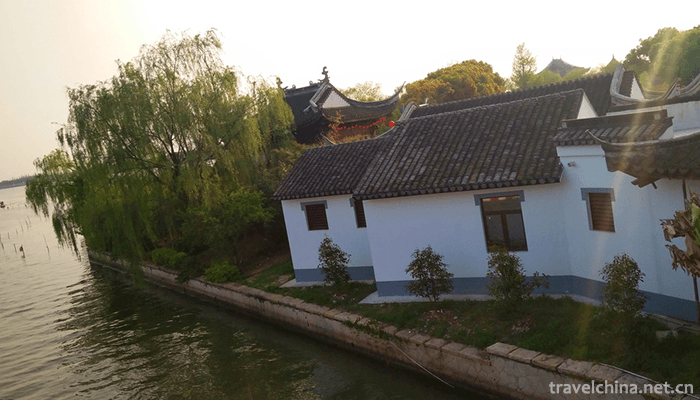
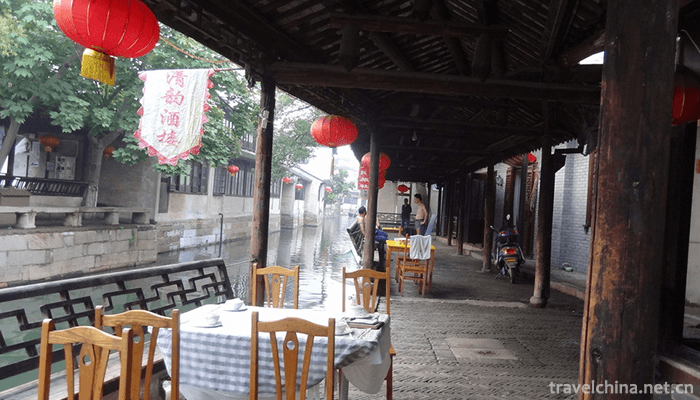
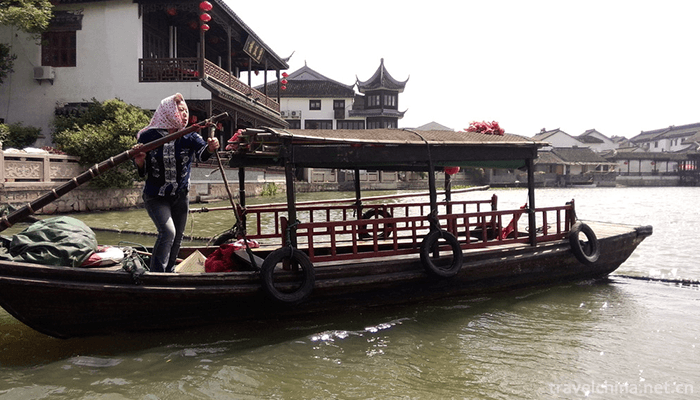
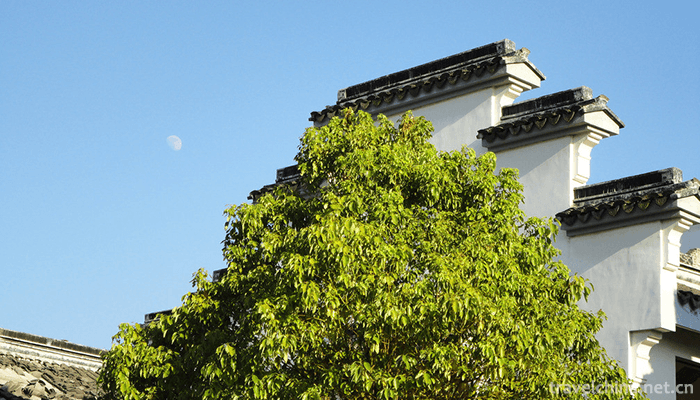
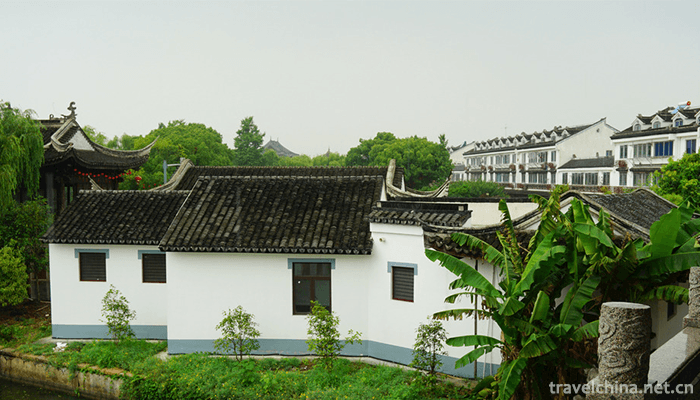
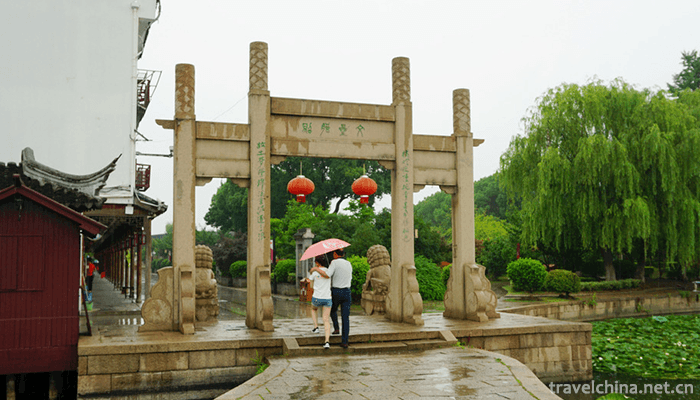
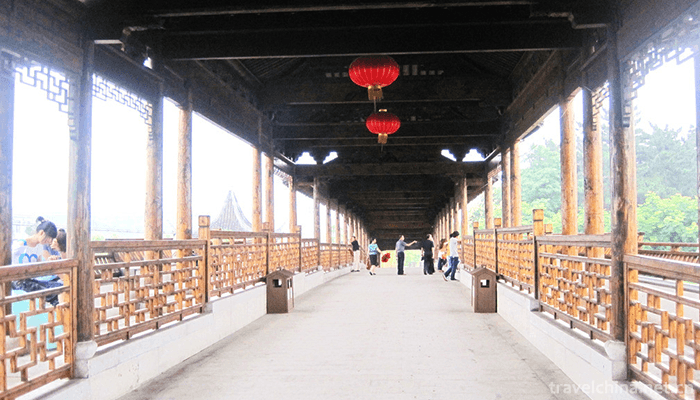



-
1.Putuo Mountain Scenic Spot
Putuo Mountain Scenic Spot, located about 100 nautical miles east of Hangzhou Bay, Zhejiang Province, is an island in Zhoushan Islands. The island covers an area of 12.5 square kilometers
Time 2018-12-07 -
2.Shihuadong National Geological Park
Beijing Shihuadong National Geopark is located in Cheying Village, Nancheng Town, Hebei Province, Fangshan District, Beijing. It is a seven-storey karst cave 55 kilometers away from Beijing
Time 2019-02-08 -
3.Xinyingtai Eco Spa Resort
Yingtai Eco-Hot Spring Resort (Eco-Park) is located on the parallel road of Tengzhou City, Shandong Province. It is a comprehensive service enterprise integrating eco-catering
Time 2019-02-26 -
4.Spring Festival
The Spring Festival, the Lunar New Year, is the first year of the year and also the traditional "New Year's Day". Commonly known as New Year, Spring Festival has a long history
Time 2019-04-22 -
5.Porcelain painting
Porcelain plate painting refers to a kind of planar ceramic handicraft which is manually painted and glazed with special chemical pigments on plain porcelain plate and then
Time 2019-04-22 -
6.Legend of Hetuluo Books
The legend of Hetu Luoshu is a folklore system about Hetu and Luoshu, which was born in Luoyang, Henan Province. It mainly includes the legend of Longma Negative Tu Temple and the offering of Luoshu b
Time 2019-05-03 -
7.Laoshan Folk Stories
Laoshan folk tales, commonly known as Lagua, are oral literature created by the local people of Laoshan Mountain in Shandong Province for thousands of years. There were few written records before libe
Time 2019-05-11 -
8.Mongolian yurt building skills
Mongolian yurt building skills, the traditional local skills of Xiwuzhumqin Banner and Chenbalhu Banner in Inner Mongolia Autonomous Region, one of the national intangible cultural heritage.
Time 2019-06-03 -
9.Miaos Rock planting Custom
Traditionally, the Miao people have a kind of public deliberation and legislative activities called "burying rock" (also known as "planting rock". When burying rock, they bury a re
Time 2019-06-05 -
10.Zuo Gezhuang Club
Chongxin Village is located in Zuogezhuang, northeast of Wen'an County. Its economic prosperity and people's prosperity have become the material and cultural basis for the preservation and continuatio
Time 2019-08-16 -
11.Chengdu Metro Line 1
Chengdu Metro Line 1 is the first metro line to be completed and put into operation in Chengdu, Sichuan Province, China. It is the first metro line opened in Western China. The first phase of the project was opened on September 27, 2010, The phase II project (Century City station to Guangdu station)
Time 2020-11-28 -
12.Ding Zhen from the plateau Village
The 20-year-old Tibetan boy is from a small mountain village in Litang County, Ganzi Tibetan Autonomous Prefecture, Sichuan Province. More than 20 days ago, a photographer released a short video on the short video platform, which made Ding Zhen
Time 2020-12-07